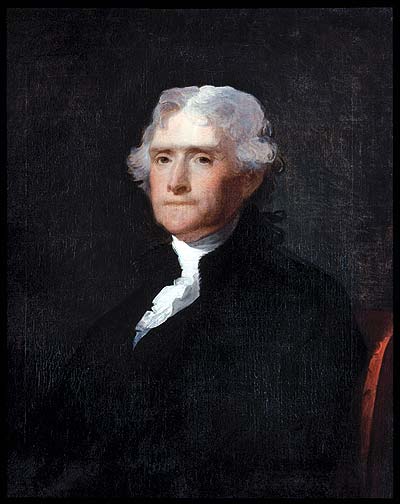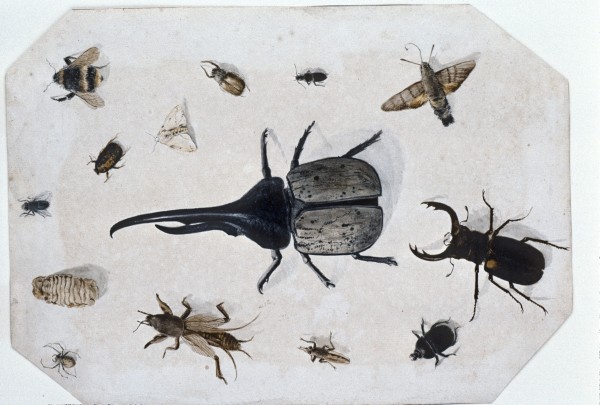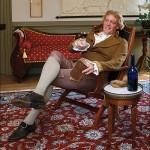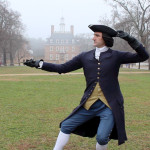 What do Thomas Jefferson, an American moose, and a French naturalist have in common? It sounds like the beginning of a bad joke, but it’s actually the subject of Dr. Lee Dugatkin’s book entitled Mr. Jefferson and the Giant Moose. Lee Dugatkin will be at the Art Museums of Colonial Williamsburg to fill us in on this little-known story!
What do Thomas Jefferson, an American moose, and a French naturalist have in common? It sounds like the beginning of a bad joke, but it’s actually the subject of Dr. Lee Dugatkin’s book entitled Mr. Jefferson and the Giant Moose. Lee Dugatkin will be at the Art Museums of Colonial Williamsburg to fill us in on this little-known story!
Here’s a little background: Count Buffon, an esteemed French naturalist, devised a theory based on his colleagues’ visits to the American colonies in the 17th and 18th centuries. He determined that the American continent was “degenerate” and that American flora and fauna were naturally smaller and weaker than their European counterparts. Buffon never actually traveled across the Atlantic himself. He simply based his theories on reports from naturalists about the climate. In the end, he deemed our land inhospitable with weak species.
His serious claims had serious implications; Buffon’s followers determined that Europeans who traveled to the Americas would degenerate, as would their offspring. Men as important as Thomas Jefferson and James Madison understood that these ideas would prevent people from immigrating to the Americas which had the potential to affect the nation economically. Thomas Jefferson in particular was infuriated by this theory and set out to force Buffon to retract his statements. It threatened the pride of the American people and insulted American naturalists.
 Jefferson was famous for his love of nature. The front hall of his beloved Monticello served as a natural history museum, complete with a pair of moose antlers. Jefferson decided that if Buffon saw a complete moose, with its impressive size and strength, he would never be able to doubt the superiority of American species.
Jefferson was famous for his love of nature. The front hall of his beloved Monticello served as a natural history museum, complete with a pair of moose antlers. Jefferson decided that if Buffon saw a complete moose, with its impressive size and strength, he would never be able to doubt the superiority of American species.
Jefferson worked in between his duties as a revolutionary, plantation owner, and politician to locate a complete moose. He wrote endless letters to hunters hoping to track down the massive animal.
We will leave the punch line to Lee Dugatkin, but you can trust that the story of capturing the moose and its road to France is just as fascinating and hilarious as it sounds! Be sure to join us Tuesday, March 24 at 5:30 p.m. You’ll need a museum admission ticket in addition to an event ticket which is only five dollars!
To learn more about American natural history, visit Birds, Bugs, and Blooms currently on exhibit at the Art Museums.
 Guest Blogger: Sally Meyer
Guest Blogger: Sally Meyer
 Sally Meyer is a History and Art History double major at Christopher Newport University and an education intern at the Art Museums of Colonial Williamsburg. Thomas Jefferson has been her favorite founding father ever since her grandmother, a tour guide at Monticello, let her play in the rotunda. Sally comes from a long line of history buffs and has loved Colonial Williamsburg since she visited with her family growing up. She plans to get her Master’s Degree in museum studies after graduation, and to have a career in the museum world.
Sally Meyer is a History and Art History double major at Christopher Newport University and an education intern at the Art Museums of Colonial Williamsburg. Thomas Jefferson has been her favorite founding father ever since her grandmother, a tour guide at Monticello, let her play in the rotunda. Sally comes from a long line of history buffs and has loved Colonial Williamsburg since she visited with her family growing up. She plans to get her Master’s Degree in museum studies after graduation, and to have a career in the museum world.




Leave a Reply